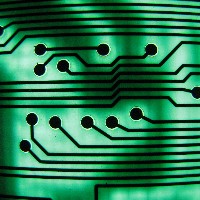 Computer researchers at Queen’s University Belfast in the U.K. developed a simpler and smaller way of generating random numbers, an essential property of cyber-security. Jiang Wu and Máire O’Neill of the university’s Institute of Electronics, Communications and Information Technology have produced a series of circuits for generating random numbers that are up to 50 percent smaller than other devices currently available.
Computer researchers at Queen’s University Belfast in the U.K. developed a simpler and smaller way of generating random numbers, an essential property of cyber-security. Jiang Wu and Máire O’Neill of the university’s Institute of Electronics, Communications and Information Technology have produced a series of circuits for generating random numbers that are up to 50 percent smaller than other devices currently available.
True random number generators (TRNGs), as they are called, produce numeric strings in an unpredictable manner, which makes them essential for cryptographic keys. Most current TRNG systems for generating random numbers, however, are too expensive or slow for many applications. Systems that simulate TRNGs can be made smaller, but they can also be broken in sophisticated cyber attacks.
Wu and O’Neill produced a TRNG with a much simpler design than before: one logic gate, one look-up table and four transistors. Their system uses the white noise inside the circuit to generate the randomness, effectively simulating the toss of a coin. To do this, they developed a new mechanism to measure the noise and generate the random output.
The next steps, say Wu and O’Neill, are finding ways to make the generators sufficiently robust for embedding in devices such as mobile phones, smartcards and RFID tags, then make them secure from attack, and develop countermeasures where needed.
Photo: Peter Shanks/Flickr

 RSS - Posts
RSS - Posts
You must be logged in to post a comment.